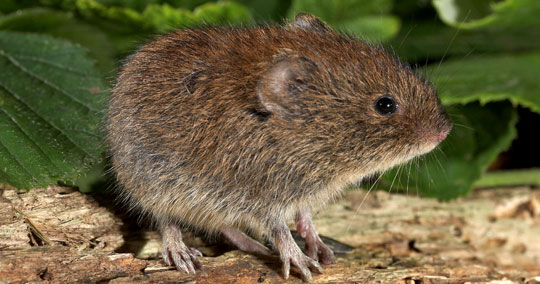Comprehensive Guide to Reliable Vole Bug Control: Infestation Identification and Therapy Methods
In the realm of reliable parasite control, vole problems position an unique difficulty that demands a strategic technique. By exploring the nuances of vole behavior, recognizing key indications of problem, and reviewing a variety of control choices, one can develop an extensive method to deal with these elusive pests.
Understanding Vole Behavior
Vole behavior is identified by their delving practices and rapid recreation prices, making them a difficult bug to regulate effectively. These small rats commonly develop intricate tunnel systems underground, using them for sanctuary, food storage, and transportation. Voles are herbivores, taking in a range of plants, light bulbs, turfs, and roots, which can cause substantial damage to yards, orchards, and lawns. Their fast reproductive price additional makes complex control initiatives, with women with the ability of creating several litters in a single year, each consisting of a number of spawn.
Voles are most active throughout the early morning and night hours, investing most of their time foraging for food. Their burrowing habits not just interrupt yards and gardens yet also make them testing to get rid of and detect. Understanding vole actions is crucial for reliable parasite control approaches. By determining their burrow places, keeping track of feeding locations, and applying targeted control methods, such as capturing or environment modification, vole problems can be managed effectively.
Indications of Vole Invasion

Prevention Approaches
Implementing reliable avoidance methods is essential in reducing vole infestations and safeguarding vegetation from their devastating feeding behaviors (vole yard damage). To prevent vole infestations, it is essential to begin by removing prospective food sources and sanctuary. Maintain turf and greenery cut short, get rid of weeds and debris, and preserve a neat garden or yard to make the area much less appealing to voles. Installing barriers such as equipment cloth or below ground fence can additionally help discourage voles from getting in particular locations. Additionally, minimizing excess dampness by taking care of leaky pipelines and ensuring appropriate drainage can make the atmosphere much less hospitable for voles.
On a regular basis read review checking the residential property for indicators of vole task, such as runways and delve openings, is vital for early detection and timely activity. If vole activity is suspected, take into consideration making use of catches or repellents purposefully put near their pathways.
Non-Lethal Control Approaches
To properly manage vole populations while focusing on gentle techniques, non-lethal control techniques supply functional solutions for lowering vole damage in landscapes and yards. One reliable method is the usage of physical barriers such as equipment towel or wire mesh to protect vulnerable plants. These barriers can be hidden a minimum of 12 inches curved and deep at a 90-degree angle to stop voles from tunneling below. Furthermore, environment modification can deter voles by reducing their favored food sources and concealing places. Keeping a well-mowed grass, eliminating particles, and maintaining plants trimmed can make the setting much less enticing to voles.

Lethal Control Options
One effective method for resolving vole infestations in landscapes and gardens involves the critical usage of deadly control alternatives. When confronted with a serious vole invasion that non-lethal approaches have stopped working to contain, applying dangerous control measures becomes essential. One frequently employed deadly control option is making use of breeze traps. These traps are developed to quickly and humanely kill voles upon activation, making them a preferred selection for numerous gardeners and landscaping news companies. To raise the performance of snap traps, it is recommended to place them in locations where vole activity is high, such as along runways or near burrow entryways. One more deadly control option is the use of hazardous lures specifically developed to target voles. These baits include toxin that is ingested by the voles, bring about their eventual demise. However, caution needs to be worked out when using harmful baits to avoid damage to non-target animals or pet dogs. Generally, when utilizing dangerous control alternatives, it is necessary to do so sensibly and in conformity with regional laws to properly take care of vole problems.
Verdict
Finally, effective vole parasite control requires an extensive understanding of vole behavior, recognition of indications of infestation, application of avoidance techniques, and use of both deadly and non-lethal control methods. By integrating these approaches, people can properly handle vole populations and safeguard their residential property from damages. It is essential to attend to vole invasions quickly to stop more problems and lessen the influence on the surrounding setting.
Given the detailed tunnel systems and rapid look at here reproduction rates particular of voles, recognizing the indicators of vole problem becomes necessary in effective parasite control. One of the key indicators of vole existence is the visibility of surface runways or trails in grass or snow, usually about 1-2 inches wide, created as voles travel between their burrows and food sources.To successfully take care of vole populations while focusing on gentle techniques, non-lethal control approaches use useful options for lowering vole damage in landscapes and yards.One efficient method for addressing vole problems in landscapes and yards entails the calculated use of deadly control choices. vole yard damage.In final thought, reliable vole bug control needs a thorough understanding of vole behavior, identification of indicators of problem, execution of avoidance strategies, and application of both non-lethal and dangerous control approaches
Comments on “Comprehensive Vole Pest Control Services in Utah”